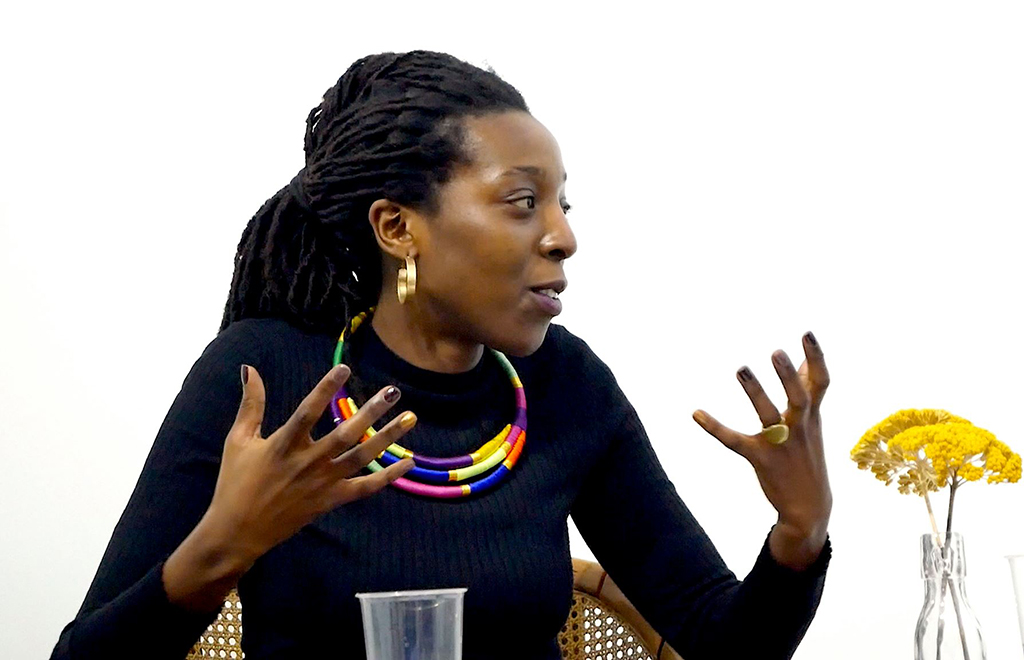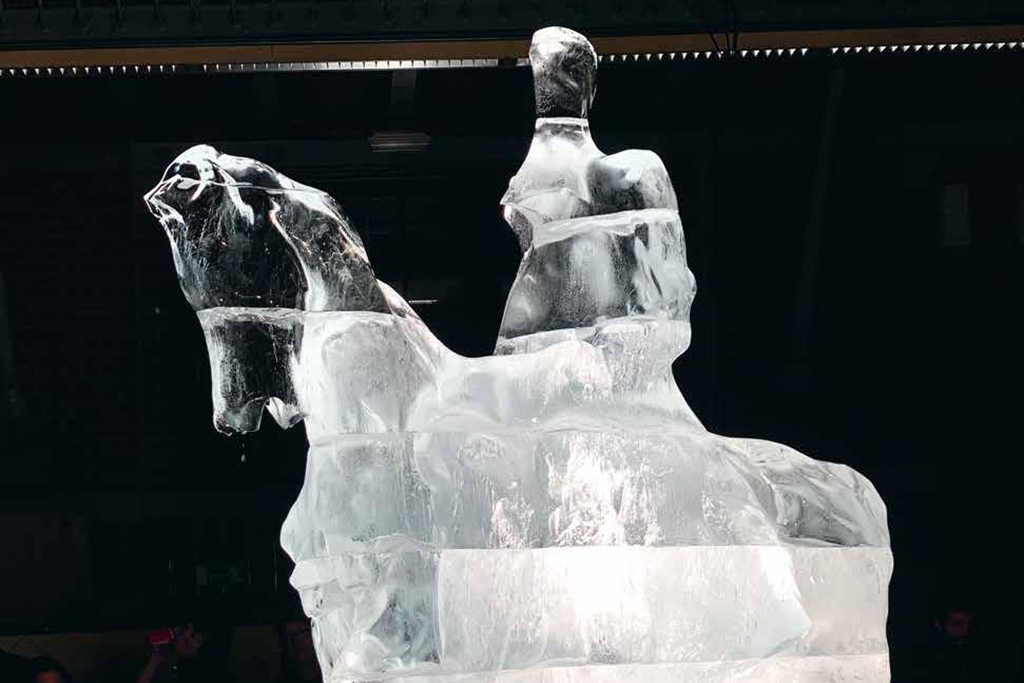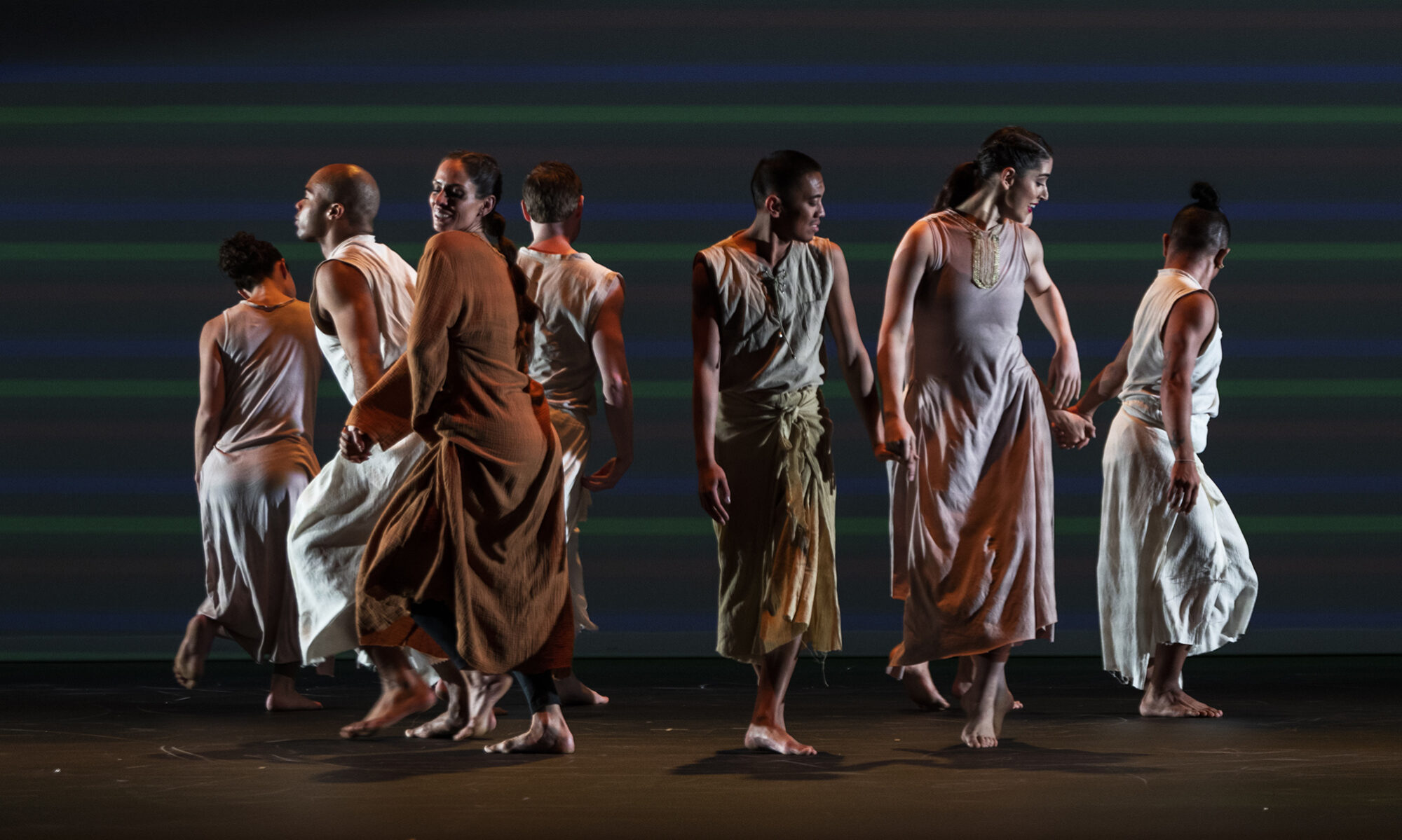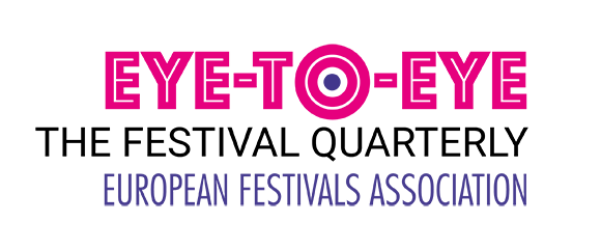The day when I (almost) melted (your father)
The challenges of the Working Group on Decolonisation

Laura Nsengiyumva is a Belgian artist of Rwandan origin, born in 1987. She graduated from the Architecture section at La Cambre. Laura is an architect and a multidisciplinary artist who defines herself as an artivist, combining her artistic practice with her activist commitment. Her work ranges from temporary installations to video installations and performances. She identifies her work as an expression of a diasporic experience. Focusing on decolonial critique, her work responds to a need to materialise this in order to create new social relationships. She participated in the Biennale of Contemporary African Art, Dak’art in 2012 and in October 2018, the artist became known for the temporary installation PeopL in which she melted the ice replica of the equestrian statue of the late monarch Leopold II. Since then, she created the Queen Nikkolah character and will expose in Dak’art 2022.
What should we do with all the traces of the colonial era in the streets of Brussels? The roughly 250 pages of our report contain a whole series of recommendations for ‘the decolonisation of the Brussels Capital Region’s public space’ (De Standaard, 17 February edition). We worked on it for a year and a half, alongside 14 experts, at the request of the Brussels Secretary of State Pascal Smet.
Today, I feel more conflicted than proud, especially because of the follow-up to our proposal concerning the infamous equestrian statue of Leopold II on the Place du Trône. On the one hand, because the ambient anti-wokism of our group did not want to mention clearly my work PeoPL as the source of inspiration. On the other hand, because in spite of courageous stands taken for the whole city, the recommendation of this specific case still ends in the status quo. The whole thing seems to be re-enacting a scene, with different faces but the same characters, from the PeoPL story.
At the end of 2017, behind closed doors, a senior member of the Royal Museum for Central Africa (RMCA) tried to make me aware of the radical nature of the artistic gesture I was trying to accomplish;
“Would you like us to melt your father?”
The PeoPL project has been sitting in the drawers of institutions for two years now; a monumental installation featuring the melting of an ice replica of the equestrian statue of Leopold II. Its base is turned upside down, levitating, its lettering redesigned in PeoPL. Because we are all queens and kings, now masters of our public space.
“My father? My father has nothing to do with it, other than the fact that yours is a genocidal man.”
Genocidal. The word not to use at the RMCA. The rest of the conversation is like a bad detective story, where the evidence is too obvious. The father is Umicore (the new name of the mining union of Upper Katanga). No major cultural institution will be able to show this work. I remain frozen.
However, in 2018, curator Nancy Galant of Nuit Blanche woke me up from my slumber. After a lot of hard work, PeoPL was exhibited in Brussels on 6 October 2018. The day before, the RMCA, which was reopening its doors, decided to rework my interview in Knack by removing all traces of their censorship, but still replied in an open letter that they found my gesture poetic.
An Art Nouveau school in the Marolles hosted the work, with a workshop on our colonial past, tailor-made for children, designed by Perle Bodiang. The children displayed an understanding that adults do not know. On the evening of the Nuit Blanche, over 2800 people came to melt the statue with their human warmth. Since then, we have been carrying the tangible dream of a future agora.
The next day, graffiti adorned the pedestal on the Place du Trône. “If we want it to disappear, we’ll have to do something about it”.
Do something about it. Two more years of protest, enlightenment on the subject, active education by associations, a petition signed by 84,000 people for its removal… Emotions are rising and converging in this place after the BLM and climate protests… IF SO MANY of us agree, will I finally be able to share the weight of PeoPL’s base? The innovative post-BLM response from our Secretary of State, Pascal Smet, seemed to be the end of the road.
For more than a year, instead of swiping on Bumble, I melted into this exercise in democracy. I immersed myself in the intercultural, the intergenerational, the gender and language differences, the different expertises… In the real diversity of Brussels. We travelled through uncharted territory in this first civil dialogue.
Evenings filled with debates that revealed the blind spots in everyone’s expertise, and our different social realities.
However, in the specific case of the equestrian statue, the composition of our working group was not sufficient to spread the weight of the PeoPL base into the final collective solution requested by the Cabinet.
A memorial to the victims of colonisation is unanimously supported, but the recommendations, because of their timidity, end up lacking clarity.
The discussion seems to be stuck, in the same place as in 2017; the material. A museum opposition wants to keep the statue intact (its form, posture, monumentality, symbolism) in order to archive it.
It would suffice to have a replica of the same statue at the Musée du Cinquantenaire. A third replica in Kinshasa would also not be enough.
The PeoPL vision maintains that the archive is not about form or image, which are pure ideologies, but about material: copper and tin looted from Congo. We have the power to transform this material into a restorative gesture that tells a story for the victims, in their memory.
As cultural sociologist Véronique Clette-Gakuba explains, PeoPL, as a process of dismantling, proposes a gesture of restitution, which takes us out of the conservation/destruction duality.
How could we not match this conservative energy? While the original composition consisted of half Afro-descendants, a type of natural selection, which remains unnamed, reduced the number of representatives to four black people, including only one man: Georgine Dibua, Dido Lakama, Sandrine Ekofo and myself. The report contains an initial self-criticism.
In practice, this translates to a privilege of time spent working for academics, representatives of institutions, fathers whose mothers look after the children… and very emotionally and physically heavy debates for the descendants of the victims of this same history. Our institutional limits will have to melt too.
I hope that the people of Brussels will not allow themselves to be divided, where we were not. The civil dialogue, the temporary artistic interventions around the monument, and later on the #Sokl, must be used to bring us together, to meet and love each other better. We propose to melt together its monumentality with human warmth, not to keep it in the fridge.
I think I speak for many citizens when I say that it is time for us to move on to something else: to imagine the memorial for the victims of colonisation together, without erasing or hiding the only trace we have left of these so-called victims: the material.
Leopold II was the second King of the Belgians from 1865 to 1909 and, through his own efforts, the owner and absolute ruler of the Congo Free State from 1885 to 1908. He ran the Congo by using the mercenary Force Publique for his personal gain. He extracted a fortune from the territory, initially by the collection of ivory and, after a rise in the price of natural rubber in the 1890s, by forced labour from the native population to harvest and process rubber. Leopold’s administration of the Congo Free State was characterized by atrocities and systematic brutality, including torture; murder; and the amputation of the hands of men, women and children when the quota of rubber was not met. In 1890, George Washington Williams used the term “crimes against humanity” to describe the practices of Leopold’s administration of the Congo Free State. (Source: Wikipedia)
Festival Life creates shared moments of audiences and artists, eye-to-eye


